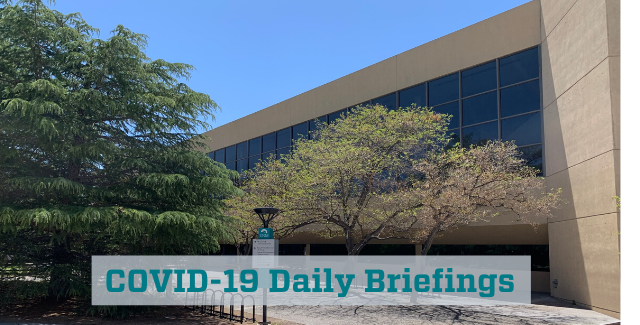Document Type
Brief
Publication Date
6-18-2020
Abstract
Executive Summary:
NM Highlights: NM case count. UNM housing plan for fall 2020. Navajo Nation health and social inequities. US Highlights: Banning airline passengers. Economics, Workforce, Supply Chain, PPE: COVID-19 Exit Strategy. Effect of extended use respirators and PPE. Epidemiology Highlights: Model predicts effects of strategies on US epidemic. Index for assessing risk of contagion. Practice Guidelines: Institutional antithrombotic protocols in US and France are reviewed. Shortcomings of restricted hospital visitation are discussed. Testing: Current testing strategies and assays. Reducing transmission in incarcerated populations. Drugs, Vaccines, Therapies, Clinical Trials: More detail on dexamethasone trial. Methylprednisolone improved outcomes. Outcomes on ACEI/ARB. 34 new trials. Other Science: Nearly 20% of world’s population is at risk for severe disease. High-flow nasal cannula for acute respiratory failure. Genome-wide association study of patients with severe disease. Frail geriatric COVID-19 patients have a higher risk of delirium. Asymptomatic infection is associated with a longer virus shedding and a weaker immune response.
Recommended Citation
Lambert, Christophe G.; Shawn Stoicu; Ingrid Hendrix; Lori D. Sloane; Mari Anixter; Anastasiya Nestsiarovich; Praveen Kumar; Morgan Edwards-Fligner; Emma Wolinsky; Alexandra Yingling; Kristine Tollestrup; Orrin Myers; and Douglas J. Perkins. "2020-06-17/18 DAILY UNM GLOBAL HEALTH COVID-19 BRIEFING." (2020). https://digitalrepository.unm.edu/hsc_covid19_briefings/53


Comments
Disclaimer: The UNM Global Health COVID-19 Briefing is provided as a public service. Sources include not only peer-reviewed literature, but also preliminary research manuscripts that have not been peer reviewed along with lay news media reports. The peer-review process often results in manuscript improvement, with corrections made for errors and unsubstantiated conclusions being corrected. Furthermore, many headlines and summaries in the briefing are written by student volunteers and others who may lack subject matter expertise in this rapidly evolving field. As such, the headlines and summaries should not be regarded as conclusive. Instead, readers are encouraged to use the briefing to identify areas of interest and then use the embedded links to read and critically evaluate the primary sources.